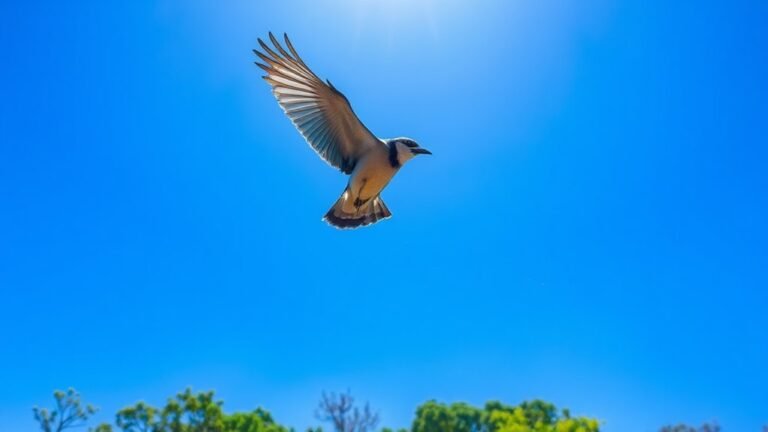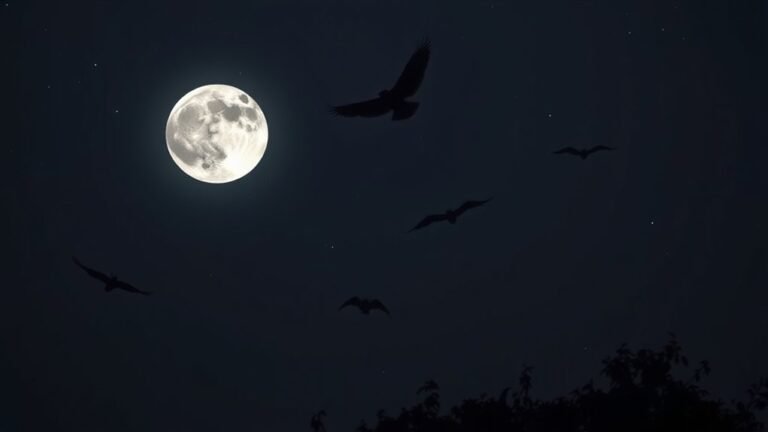Slowest Flying Bird: Nature’s Leisurely Flyers
Slowest flying birds show a distinct survival strategy. They differ from faster species by conserving energy and blending into their surroundings. Birds like the American Woodcock and European Nightjar exhibit slow flight patterns and excellent camouflage. These traits raise interesting questions about their role in nature. What insights do these unhurried birds offer about balance and efficiency in ecosystems?
Key Takeaways
The American Woodcock is known for its excellent camouflage. It is one of the slowest flying birds in North America.
The Wandering Albatross is not extremely slow. It glides gracefully, conserving energy over long distances.
The European Nightjar flies silently and deliberately at night. This slower approach helps it hunt insects effectively.
Great Egrets fly slowly and patiently when hunting for fish. They use strategy over speed for survival.
Pelicans are recognized for their slow, steady flight. They glide to conserve energy during long migrations.
The Fascinating World of Slow-Flying Birds

Many birds are known for their speed, but slow-flying birds provide interesting examples of adaptation. Birds like the American Woodcock and various doves use slow migration patterns. This strategy helps them save energy and thrive in their environments.
These birds hunt with patience and precision. They observe prey movements closely and use camouflage instead of speed. This method shows how evolution shapes survival tactics.
Engaging with slow-flying birds helps us see the balance in nature. Every strategy, even slow ones, serves a purpose in the ecosystem, making their behaviors fascinating to observe.
The American Woodcock: A Master of Camouflage
The American Woodcock demonstrates effective camouflage and slow flight that aid its survival. This bird blends into the forest floor, becoming difficult to see among fallen leaves and twigs. Its feathers, which are shades of brown and gray, help it remain hidden from predators.
When the woodcock flies, it moves slowly and deliberately, making it look like it's part of the surroundings. This slow flight also helps the bird find food, as it searches the ground for earthworms while staying concealed.
Understanding the woodcock's unique adaptations shows how nature helps animals survive in their habitats.
The Wandering Albatross: Gliding on Ocean Breezes

The Wandering Albatross glides over the ocean with ease. Its wingspan can reach 12 feet.
These birds use wind currents to travel long distances during their migration. You'll often see them soar above waves, rarely flapping their wings.
This way of flying saves energy and highlights the beauty of nature. As they search for food, their smooth flight captures the wonder of wildlife.
The Wandering Albatross shows how nature adapts to challenges with grace.
The European Nightjar: Camouflage and Nocturnal Flight
The European Nightjar is a bird known for its excellent camouflage and nighttime behavior. Its feathers blend well with leaves and twigs, allowing it to hide from both predators and potential threats.
This bird often rests on the ground, making it hard to see. When night falls, the Nightjar flies into the air in search of insects. It glides quietly, which helps it remain undetected.
Its ability to blend in with its environment and fly silently at night helps it survive in the wild. The European Nightjar showcases nature's smart survival strategies.
The Great Egret: Graceful and Deliberate

The Great Egret is a captivating bird found in shallow waters. You can see its graceful movements as it wades slowly, illustrating its hunting style. Each step it takes is careful, showcasing its role as both a predator and a performer.
Here are some key features of the Great Egret:
- Beautiful Feathers: Its white plumage stands out against the water.
- Hunting Method: It often remains still, waiting quietly for fish to swim by.
- Confident Movements: Every action reflects calmness and poise, drawing the attention of viewers.
The Great Egret serves as a reminder of the value of patience and precision in nature. Its presence adds a sense of peace and beauty to its environment.
The Slow-Poking Pelican: Efficiency in Motion
When you see a pelican flying, you notice its slow and steady movement. This flight style contrasts with the quick flapping of smaller birds.
Pelicans use gliding to save energy. They take advantage of updrafts and thermals, which help them keep a steady pace while flying.
With their large wings and wide wingspan, pelicans can fly without much effort. This helps them when they look for fish.
Their slow flight allows them to watch the water carefully and spot their next meal easily. This way of flying shows how animals adapt to survive in their environment.
Observing pelicans can be a reminder that sometimes taking it slow is the best approach.
Unique Adaptations of Leisurely Flyers
Leisurely flyers glide smoothly through the air. They've special adaptations that help them live well in their environments. Their flying styles show interesting strategies for survival.
- Broad Wings: These birds have wide wings that help them catch thermal updrafts. This allows them to fly longer without using much energy.
- Slow Wingbeats: They beat their wings slowly and carefully. This helps them descend softly and glide for a longer time.
- Low Stall Speed: A low stall speed helps them maneuver in tight spaces. This ability helps them escape from predators and increases their chances of survival.
These features show how leisurely flyers balance efficiency and beauty. They remind us to appreciate their skill in nature.
The Ecological Importance of Slow-Flying Birds
Slow-flying birds are vital for ecological balance. Their slow flight allows them to perform key roles in their habitats. Many of these birds are important pollinators and seed dispersers.
Their gentle movements help them find insects and plant materials, which impacts local food chains. Additionally, they provide food for various predators, connecting different parts of the ecosystem.
By stabilizing plant populations and offering nourishment to other wildlife, slow-flying birds boost biodiversity. Their presence creates a balanced environment, highlighting nature's interconnections.
Recognizing their contributions can deepen our appreciation of the ecosystems that sustain us.
Frequently Asked Questions
What Is the Slowest Flying Bird in the World?
The slowest flying bird in the world is the American woodcock. This bird can fly at speeds as low as five miles per hour. Its unique characteristics and flight limitations show how nature adapts. The American woodcock has a distinctive flight pattern, making it an interesting species to observe.
How Do Slow-Flying Birds Find Food?
Slow-flying birds find food using simple and effective methods. They watch their surroundings closely. They often visit places where there are many insects or seeds. These birds adjust their searching techniques based on what is available in their area. This helps them eat well and thrive in different environments.
Do Slow-Flying Birds Migrate?
Yes, slow-flying birds migrate. They have special flight skills that help them travel long distances. These birds follow different migration routes to find the best places to live and feed. Their ability to adapt helps them survive in changing environments.
What Threats Do Slow-Flying Birds Face?
Slow-flying birds face many threats. Habitat loss reduces their safe spaces for nesting and living. Natural predators pose a serious risk as well. These challenges make survival difficult for slow-flying birds. You can support conservation efforts to help protect their habitats and ensure their survival.
How Can I Identify Slow-Flying Birds?
To identify slow-flying birds, watch their feather patterns and flying style. Look for birds that flutter and fly at lower altitudes. These movements suggest they are flying leisurely, allowing you to connect with nature's peaceful pace. Observing these characteristics can help you enjoy your birdwatching experience more fully.

Ava is a bird enthusiast and nature lover who has spent countless hours observing and learning about the fascinating world of birds. With a passion for sharing her knowledge and inspiring others to appreciate the beauty of birds, Ava writes about her experiences and insights on avianadmirer.com.







